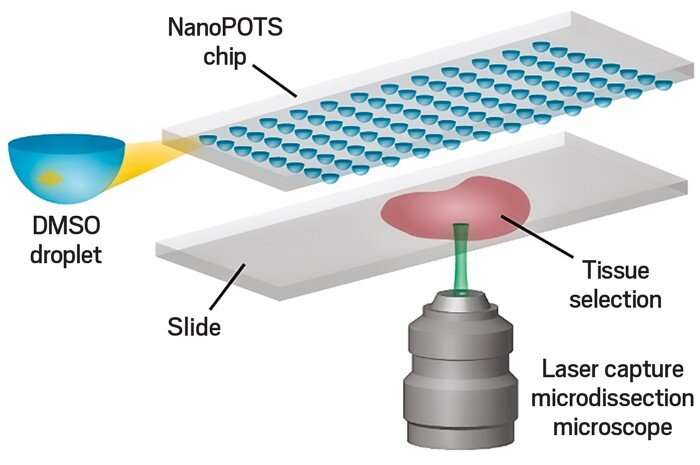Probing proteins in single cells

Different cells make different proteins, and knowledge of these differences could greatly enhance scientists' understanding of the roles of individual cells in healthy tissues and in disease. But obtaining enough protein from a single cell to analyze has been challenging. Now, researchers have developed new methods that could unlock the proteomic secrets of individual cells, according to a cover story in Chemical & Engineering News.
For years, scientists have had tools, such as the reverse transcription-polymerase chain reaction (known as RT-PCR), to analyze genes being transcribed in single cells. However, they lacked analogous tools to boost tiny traces of proteins into detectable signals, writes Senior Correspondent Celia Henry Arnaud. But now, advances in mass spectrometry and sample processing are allowing scientists to see cell-to-cell differences, with the goal of someday getting a full readout of all proteins being made in a cell.
Although still a long way from achieving this objective, scientists have identified hundreds of proteins from single cells, which is fueling new discoveries in fields such as developmental biology, cancer biology and neuroscience. For example, researchers have used single-cell proteomics to detect differences in proteins among individual cells in 16-cell frog embryos, which has revealed new insights into how embryonic stem cells develop. Others have used the techniques to learn more about cancer cell regulation and signaling, which could help answer the question of why some cancers don't respond to therapies. And still others are studying how the ratios of proteins that control muscle contraction change during heart diseases, which could lead to personalized therapies for heart failure. The field of single-cell proteomics—which many scientists thought was out of reach—has grown rapidly in the past couple of years with the advent of new techniques, more sensitive mass spectrometers and interdisciplinary approaches, Arnaud writes.
More information: Article: cen.acs.org/biological-chemist … ics-mass-spec/99/i40
Provided by American Chemical Society





















